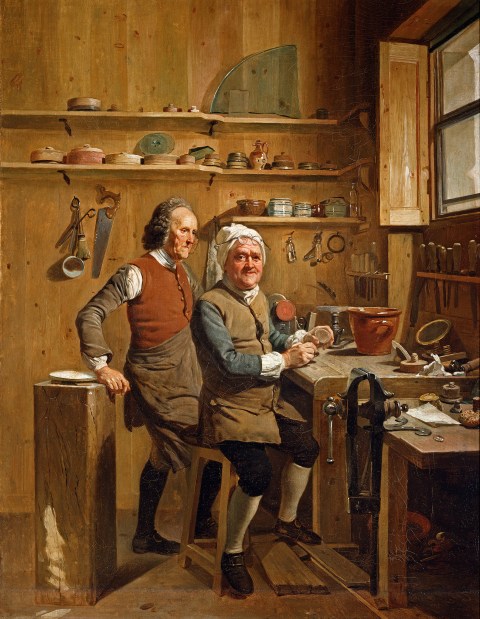
It is often hastily assumed by employers that artisans wearing glasses are not so well fitted to do certain classes of delicate work as those who depend exclusively upon their natural eyesight. This notion, it would appear, is a mistaken one, and in a recent work on the subject, Mr. R. B. Carter mentions one very remarkable proof of the harmlessness of using glasses—and even of employing a single glass.
Among watchmakers it is an unavoidable necessity of their calling to work by the aid of a single glass, and they appear to enjoy an enviable immunity from eye diseases. It is, he says, exceedingly uncommon to see a working watchmaker among the patients of the opthalmic department of a hospital, and he entertains little doubt that the habitual exercise of the eye upon fine work tends to the development and preservation of its powers.
The persons who suffer most, according to Mr. Carter, from popular prejudice and ignorance on the subject of spectacles, are men of the superior artisan class, who are not engaged on work which requires good eyesight, and who, at the age of 50 or sooner, find their power of accomplishing such work diminishing.
It is, he tells us, a rule in many workshops that spectacles are altogether prohibited, “the masters ignorantly supposing them to be evidences of bad sight, whereas the truth is they are not the evidences of bad sight at all, but only of the occurrence of a natural and inevitable change, the effects of which they entirely obviate, leaving the sight as good for all ordinary purposes as it ever was.”
Mr. Carter adds that “in many shops in which they are not prohibited they are still made an excuse for a diminution of wages; and the result of these practices is that hundreds of good workmen struggle on, perhaps for years, doing their work imperfectly, when a pair of spectacles would instantly enable them to do it as well as at any former period. In the present state of knowledge there is no excuse for rejecting a man’s services, or for diminishing his payment, because he requires spectacles, unless it can be shown that, even when he is furnished with them, his sight is below the natural standard of acuteness.”
Persons who are condemned to the use of spectacles will thank Mr. Carter for thus coming forward as their champion.
Carpentry and Building – August 1880
Quotations from:
Eyesight, Good and Bad: A Treatise on the Exercise and Preservation of Vision
Robert Brudenell Carter – 1880
The painting is John Cuff and his assistant (1772) by Johann Zoffany, commissioned by George III. John Cuff (1708-72) was a Fleet Street optician, maker of spectacles and microscopes.
—Jeff Burks